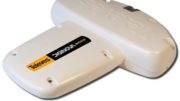Three antennas. One amplifier. That’s not a problem most people have, but here at Solid Signal we specialize in helping people who know just what they want. Anyone can have a simple antenna setup, right? We’re here for you if you want a complex one.
A little bit of common sense
Now, this blog hasn’t always been about heavy-duty physics. For things like that I rely on guest bloggers like Phil Karras if I get too far into the weeds. I like to specialize in articles that explain things in simple language. Sometimes that means I am not as precise as I could be, but it’s all done so that you can get some basic skills. Here’s one of those cases.
Basically…
When you split a signal, it’s better and easier to do it in half than to try to do it in thirds. It’s cleaner, it works better, it takes less engineering. This is why most splitters and combiners come in powers of 2: 2, 4, 8, 16, etc. The amount of engineering it takes to make a good 3-way combiner is usually a lot more than making a 4-way combiner. And truth is, in most cases it isn’t worth it. A lot of splitters and combiners sell for under $20 and it’s hard to justify a major engineering and manufacturing effort for something like that.
Is it really a 3-way combiner?
There are a few true 3-way combiners out there. The one on the top of this page is one. It’s intended for industrial use and it tends to sell for a lot more than $20 when we can get it, which is pretty rare. It’s a special-purpose item to be sure.
There is one way to make a 3-way combiner cheaply, and that’s to make a 4-way combiner and terminate one of the lines inside the combiner. I have to say, there’s really no benefit to this. You could easily just get a 4-way combiner and have the option. The loss characteristics would be the same and you’d have some flexibility if you ever needed it.
The same is true of splitters
For the most part, splitters and combiners are the same thing. You actually have to add stuff to a splitter to make it unusable as a combiner, so a less expensive splitter usually makes a better combiner. So if you see a 3-way splitter out there for a good price, chances are that it’s really a 4-way splitter that’s hiding a secret.
Is there any way to know for sure what you’ve got?
Yes, you can generally see what you have by the published loss number. An unamplified 4-way splitter will always have loss of at least 6dB. That’s because -6dB is just a fancy way of saying “1/4 the power.” Add about 1dB loss for the electronics and that’s why most 4-way splitters or combiners have 7dB loss. If your 3-way splitter or combiner has 7dB loss, it’s really a 4-way splitter or combiner. If it has about 5dB loss, it’s really a 3-way combiner or splitter.
No matter what you need, there’s one place to get it
There’s one place you can get the parts and accessories for virtually any RF distribution project. Shop at Solid Signal for everything you need to live your best digital life! If you need help, call us at 888-233-7563 and we’ll connect you with an expert!





